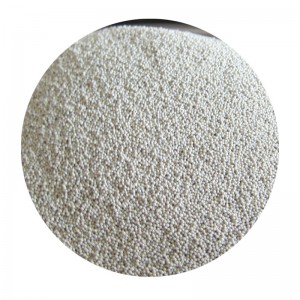Sanding Ceramic Mugs A Guide to Perfecting Your Craft
Sanding ceramic mugs is an essential technique for both novice and experienced artisans in the world of ceramics. Whether you're a hobbyist looking to add a personal touch to your creations or a professional aiming to produce flawless pieces for sale, understanding the sanding process can significantly enhance the quality and finish of your ceramic mugs. This article will guide you through the sanding process, its importance, the tools required, and some tips for achieving the best results.
Why Sanding Matters
Sanding is not just a step in finishing; it's a critical process that affects both the aesthetic and functional aspects of ceramic pieces. When ceramic mugs are thrown on a pottery wheel or formed using mold techniques, they often have rough edges and uneven surfaces. These imperfections can detract from the overall look of the piece, and may even cause discomfort when holding the mug.
Moreover, sanding prepares the ceramic for glazing. A smoother surface allows for more even application of glaze, leading to a more polished appearance and better overall finish. It also helps the glaze adhere more effectively to the ceramic, resulting in a durable and visually appealing product. In essence, sanding is the bridge between raw ceramic and the finished item, ensuring quality at every stage.
Tools and Materials Needed
To sand ceramic mugs, you will need the following tools and materials
1. Sandpaper Start with a coarse grit sandpaper (around 80-120 grit) to remove larger imperfections, followed by finer grits (220, 320, and up to 600 grit) for a smoother finish. Wet/dry sandpaper is particularly effective for ceramics, as it can be used both dry and wet.
2. Sanding Block or Sponge A sanding block or sponge can help provide even pressure and control during sanding, especially on curved surfaces like mugs.
3. Water Dipping your sandpaper in water allows for smoother sanding and reduces the amount of dust generated. It also helps prevent the sandpaper from clogging.
4. Dust Mask Protecting yourself from inhaling dust particles is essential. A simple dust mask can help safeguard your health while working.
5. Cleaning Cloth After sanding, it’s important to clean the surface of your mug to remove any dust or debris before glazing or applying a finish.
sanding ceramic mug

The Sanding Process
1. Prepare the Work Area Ensure your workspace is clean and well-lit. Lay down a protective covering to catch any dust or debris during the sanding process.
2. Start with Coarse Grit Begin by using your coarse grit sandpaper. Wrap it around your sanding block or sponge and gently sand the rough areas of the mug. Concentrate on edges, spouts, or any uneven parts.
3. Use Water To minimize dust and make the sanding process smoother, sand with wet paper. Dip your sandpaper in water before starting, and keep it moist throughout the process.
4. Progress to Finer Grit Once you’ve achieved a reasonable smoothness with the coarse grit, switch to a finer grit sandpaper. Repeat the sanding process, this time focusing on achieving a very smooth surface.
5. Clean the Mug After sanding, use a damp cloth to wipe down the mug thoroughly. This will remove any dust and prepare the surface for glazing.
6. Final Inspection Inspect the mug for any remaining rough spots or imperfections. If necessary, repeat the sanding process on those areas.
Tips for Success
- Take Your Time Sanding can be time-consuming, but rushing can lead to uneven surfaces. Patience is key to achieving professional-looking results. - Use Light Pressure Applying too much pressure can damage the ceramic. Instead, use light and consistent pressure to ensure an even finish.
- Keep it Moist Remember to keep the sandpaper moist, as it not only helps with a smoother finish but also helps to keep the surfaces from clogging.
- Practice If you are new to sanding ceramics, practice on less significant pieces to build your confidence and technique.
In conclusion, sanding ceramic mugs is a rewarding process that can greatly enhance the quality of your finished products. By following these guidelines, you can achieve smooth, beautiful finishes that not only look good but also feel great in hand. Whether you’re creating mugs for personal use or preparing pieces for sale, mastering the art of sanding is essential for any ceramic artist. Happy sanding!
Post time:ഡിസം . 05, 2024 16:58
Next:Top Suppliers for Casting Sand and Related Materials
